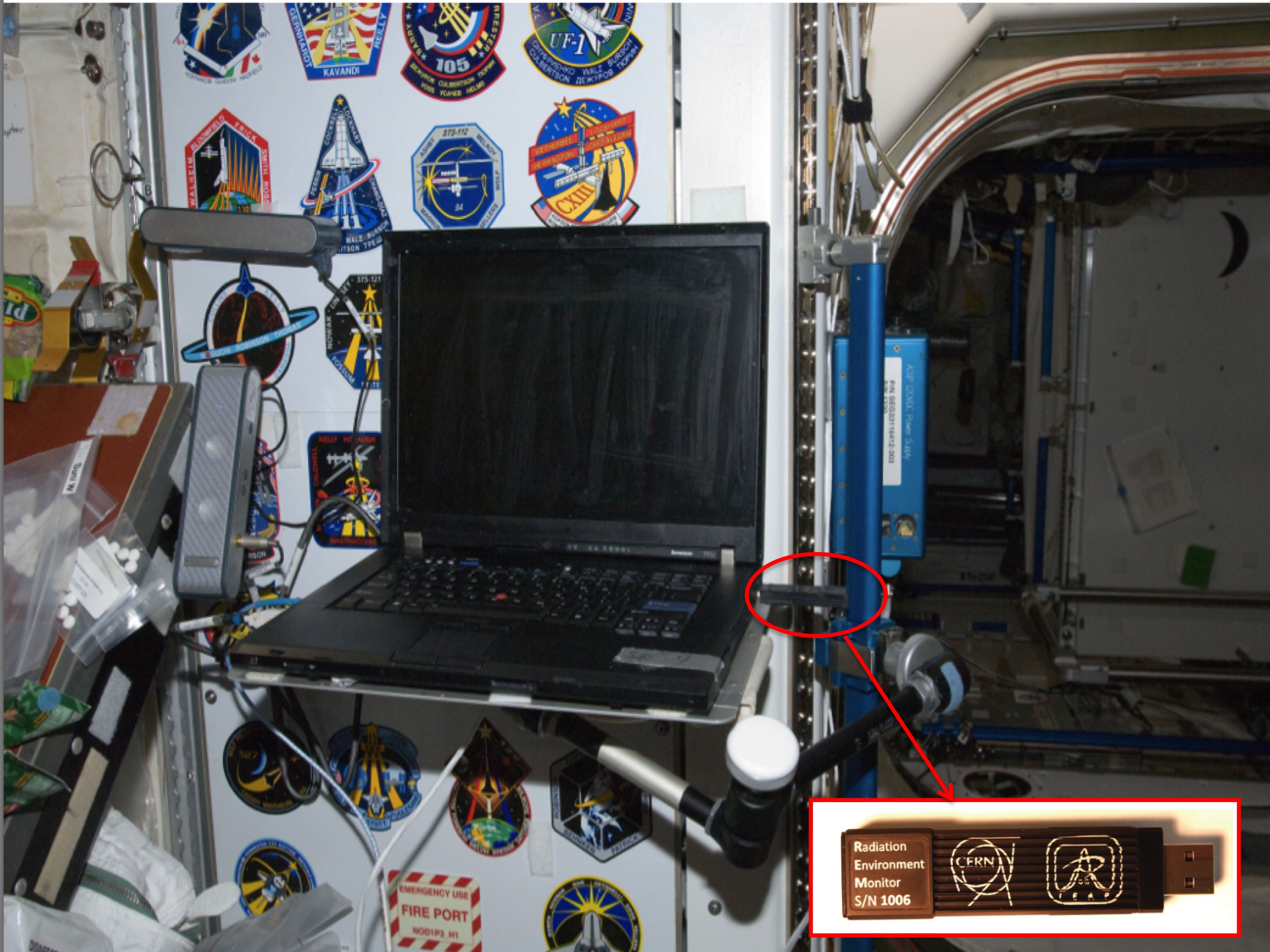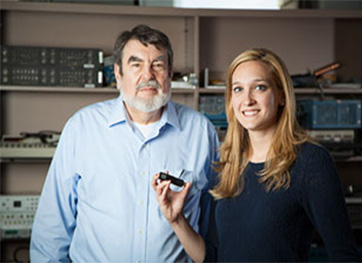Radiation Monitors Tested on Orion Space mission
On Friday 5 December, NASA's new Orion spaceship, a capsule built to take humans further into space than ever before, made its first test flight. The flight marked the first time, since Apollo 17 was launched to the moon in 1972, that a spacecraft built for humans traveled out of low-Earth orbit. Behind the Orion mission there is a flavour of High Energy physics in line with a tradition of synergies between the two fields. More specifically, following the previous success of the Timepix project on the International Space Station (ISS), CERN scientists worked closely with their colleagues at NASA to integrate Timepix in the Orion spaceship.
Pivotal in this effort was Lawrence Pinsky, who started his career in heavy-ion physics at the NA48 and later NA49 fixed target experiments, before joining the ALICE collaboration. Later, he became involved with NASA's Apollo programme, where he was mainly responsible for heavy particle dosimetry. He worked as a postdoc at NASA’s space programme from 1977 to 1990. At that time, he became interested in the simulation of cosmic rays events with the use of GEANT3. His colleagues were also trying to do the same simulations of heavy particles coming from cosmic rays with FLUKA and he joined them. They developed the first Monte Carlo code to simulate transport phenomena of heavy cosmic rays.

Image of the Timepix USB system in operation on the International Space Station (Image Courtesy of NASA).
In 2006, when NASA invited him to give a series of lectures, he met Michael Campbell. Strangely, even though they worked in neighbouring buildings, they never had the chance to interact before and realize the possibility of using some of the technologies developed at CERN in space programmes. Michael showed MEDIPIX2 to Pinsky, who immediately realized its potential and demonstrated the chip to his colleagues in Houston. During a workshop held by NASA, they advertised it to experts in space radiation and monitoring from all over the world. Various other projects were presented during the workshop, but it was MEDIPIX2 that had the most advantages and outclassed the rest.

Larry Pinsky and undergraduate physics major Christina Stegemoeller, who worked with the group, display the Timepix detector.
NASA and Huston joined MEDIPIX2 in 2007 and worked actively in developing the new chip. In 2010, during the Workshop on Radiation Monitoring for the International Space Station – an annual meeting to discuss the scientific definition of an adequate radiation monitoring package and its use by the scientific community on the ISS – a sequence of lectures on MEDIPIX took place. As the funding necessary for the project to continue was approved, more institutes joined the MEDIPIX2 collaboration that later developed the Timepix chip. The chip was finally installed on ISS in October, and started collecting data and sending them to physicists for analysis.
The ISS Timepix detectors gather data to characterize the radiation field as a function of time, taking precise measurements of the spectrum of charge and velocity of particles present inside the spacecraft. These Timepix units are compact USB powered devices, based on Medipix technology, that are controlled via Flight Software deployed on existing ISS Computers. Configuration settings can be modified and uploaded from the ground to adjust data-taking parameters as needed on orbit, and minimal crew time is required for deployment and operation. The flight software displays total dose and dose rate based on LET information compiled from individual particle tracks. In addition, full measurement data is saved and down-linked for further analysis.
Pinsky’s success with the Timepix project on the ISS led to the incorporation of the detectors to NASA's Orion spaceship. Timepix technology could improve or replace older devices by helping scientists analyse the particles and energy spectrum and then calculate the risks of exposure to heavy-ion radiation. This first trip was an opportunity to gain experience of the use of detectors in space, contributing to the development of the next generation of Timepix.
During the test flight, mission controllers extensively checked Orion's systems. The capsule orbited Earth twice, with its second orbit taking it about 5,793 kilometres away from the planet's surface — 14 times farther than the orbit of the International Space Station.
Read a previous PH article on "MEDIPIX applications: from HEP experiments to the outer space and beyond."
